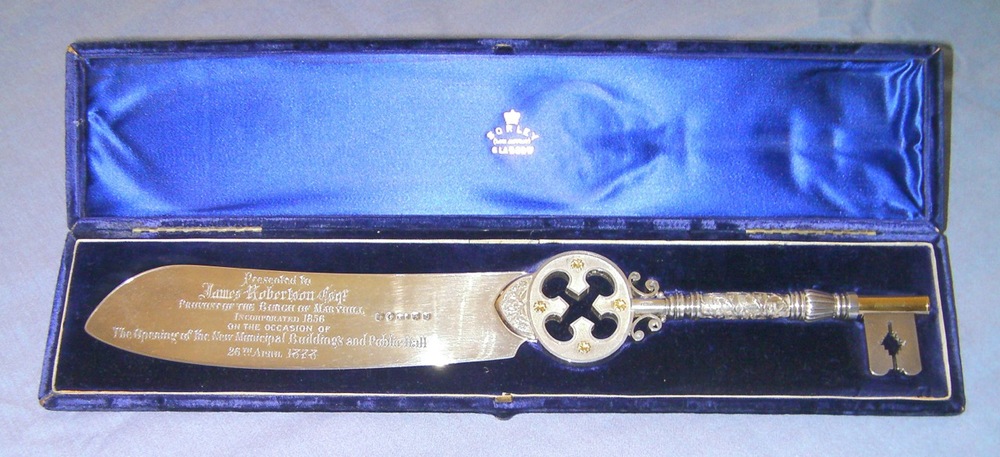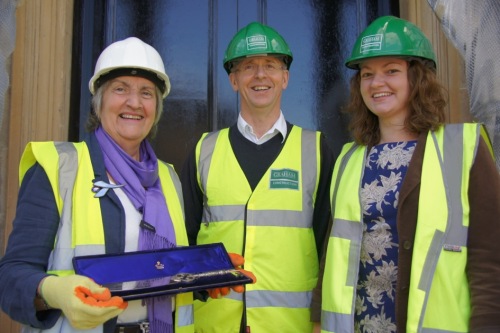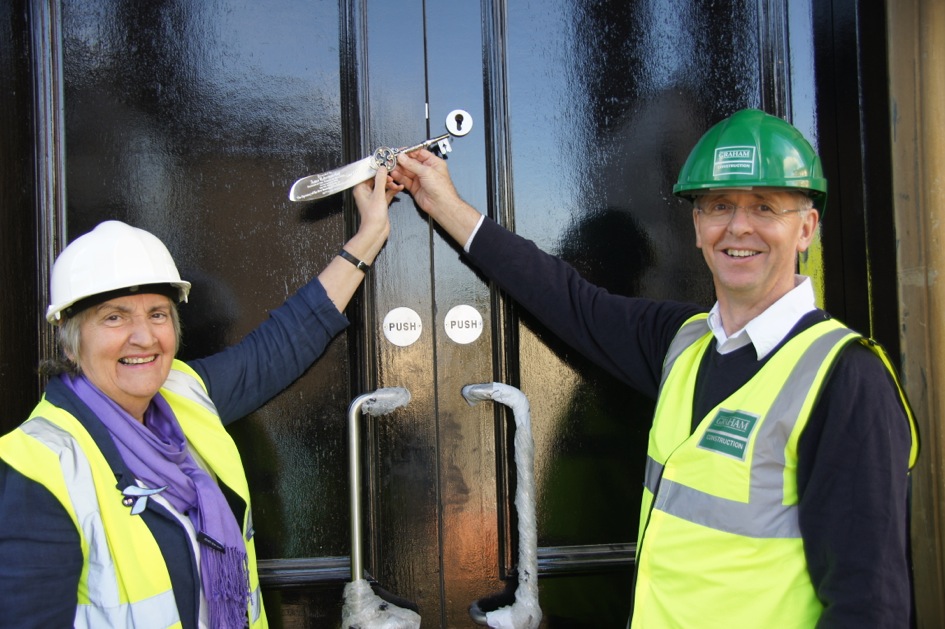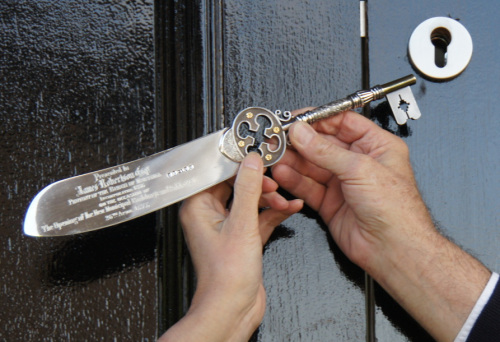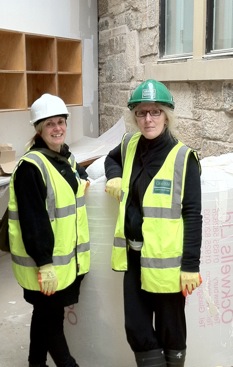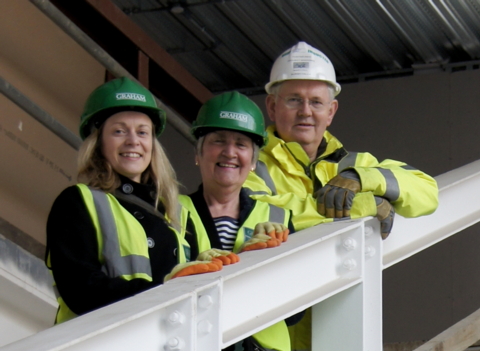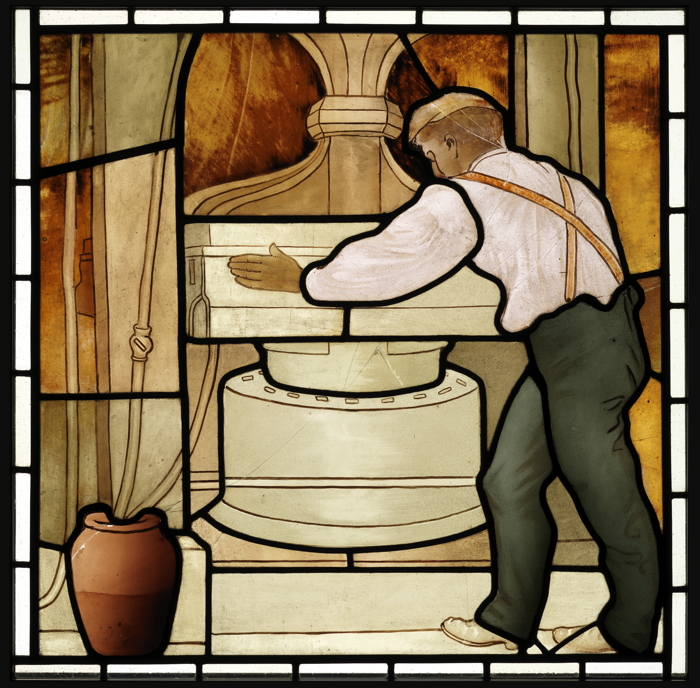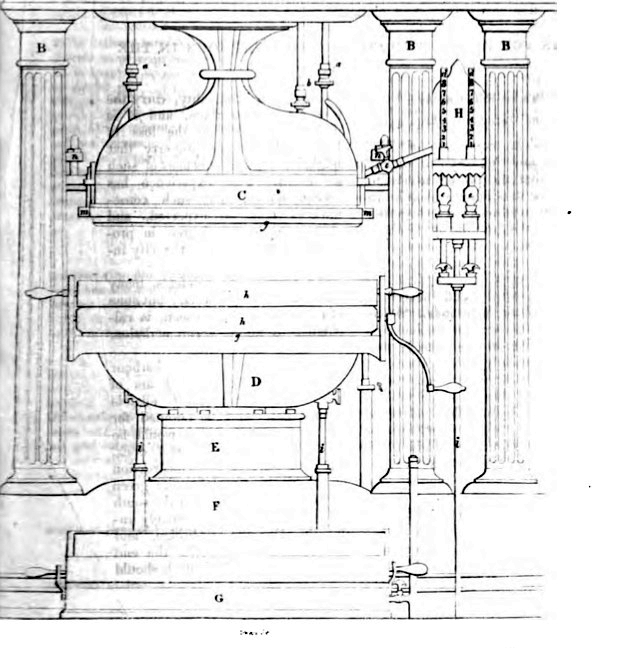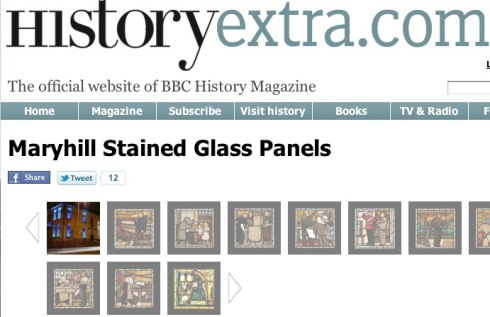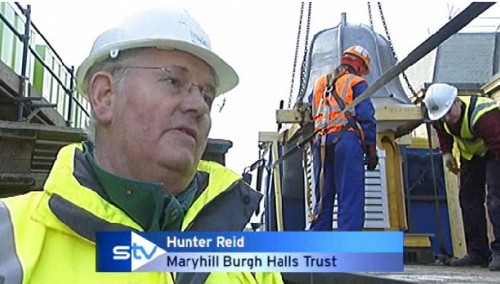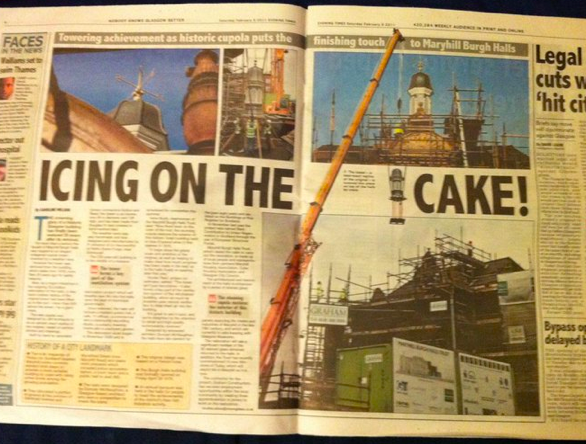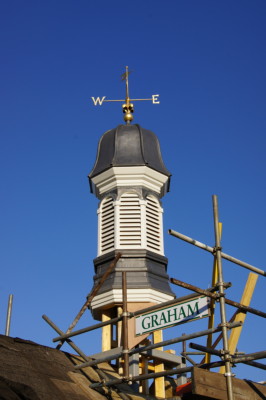Press Release:
Set of ten includes the world’s first ever interactive stained glass window!
Stained glass is an ancient art form that stretches back hundreds of years. Now, here at Maryhill Burgh Halls, we’re ready to reveal the world’s first ever interactive stained glass window.
Scan the 2D barcode in the window with your smartphone, and you’ll be automatically taken to a webpage explaining the designs and giving information about the glass.
While the new glass is as modern as can be, stained glass in Maryhill has a long history: in 1878, the then Burgh commissioned twenty stained glass windows to showcase the trades and industries of Maryhill. They were designed by the artist Stephen Adam, and have become known as the crown jewels of Maryhill.
In 2010, Maryhill Burgh Halls Trust decided to commission ten new stained glass windows, to celebrate the completion of the multi-million pound restoration of the Halls.
Around 250 local people - ranging in age from 6 to well over 65! - got involved in the process, learning about the techniques involved in stained glass making, creating their own stained glass, and crucially, having their say as to the kinds of things the new windows should depict.
Featured in the original 1878 windows were boatbuilders, glassblowers, iron moulders and a canal boatman - what things would the people of modern Maryhill like to see captured in glass for the 21st century?
Glass artist Alec Galloway, working with community specialist Margo Winning, has distilled the hundreds of comments and suggestions down into a variety of themes depicted in ten new windows.
Alec says: “I have to thank everyone at Maryhill for giving me their time and having faith that I could deliver the ideas that were presented - the key to the project has been the close community involvement and the fact that so much has come directly from the people and imagery of Maryhill itself.
I wanted to create something different from the original 1878 Adam windows, but that would sit along side them and not become overshadowed. They are defined by the screenprinting technique, something that I'd only really done on a few pieces before - this then marks them out as being pretty unique as an architectural glass scheme anywhere in the UK.
I really do look forward to seeing them permanently on display in the Burgh Halls!”
Margo commented: “It quickly emerged that the multiple layers of communities that make up Maryhill were very keen to express their thoughts and ideas in a range of ways; including writing, drawings, glass making and in endless interesting discussion and chat. It provided an enormously valuable introduction and connection to the area and community, letting me learn more about the place and people in a few weeks than I otherwise could have in years. It has been a delightful project to be involved in.”
Gordon Barr, Heritage Development Officer for the Trust, said:
“We’re really excited to finally see the results of all the hours of workshops and talks, and the effort put into this, not just from Alec and Margo, but from the literally hundreds of local people who got involved in various ways to have their say, try out some of the techniques involved in making stained glass, and in some cases, have their images actually featured in the glass itself.
The original Adam windows - which thanks to Glasgow Museums will be coming back to be displayed in the building very soon - have lasted over 130 years. Hopefully in another 130 years - around the year 2145 - the descendants of some of the school pupils featured in these new windows will be coming to the Burgh Halls to see just what their great-great grandfather looked like when he was in Primary 7 !”
Key funding for the Windows of Today project came from the Heritage Lottery Fund. Colin McLean, Head of the Heritage Lottery Fund in Scotland, said:
“In 1878 the most magnificent stained glass windows were unveiled to celebrate the opening of the Burgh Halls. Over a hundred years on, the art of stained glass has inspired the community to come together again to celebrate their rich heritage. With their roots in the past, these new windows are a symbol of the future and the people of Maryhill should be extremely proud of what they have achieved.”
The ten new windows have the following themes:
Education - featuring Primary 7 children from a local school
Culture - featuring Maryhill-born Turner prize winners Douglas Gordon & Susan Philipsz
Social Heritage - featuring Jaconelli’s cafe
Heavy Trades - featuring the Maryhill canal and locks
Workers - featuring the Bryant & May match factory
Space Age - featuring a local company that makes satellites
Youth - featuring a local youth club
Sport and Leisure - featuring the Maryhill Harriers running club, and 2 local football teams
Regeneration - featuring the Burgh Halls itself, and the silver key that opened it in 1878
Diversity - featuring some of the many different cultures now making up Maryhill
Connecting all the windows are excerpts from archive maps of the area, and lines from the song ‘Voices’, written by Kevin McDermott, about growing up in the Maryhill area.
Notes to Journalists
Using money raised through the National Lottery, the Heritage Lottery Fund (HLF) sustains and transforms a wide range of heritage for present and future generations to take part in, learn from and enjoy. From museums, parks and historic places to archaeology, natural environment and cultural traditions, we invest in every part of our diverse heritage. To date it has invested over £500million in Scotland’s heritage.
Further information
Please contact Shiona Mackay on 01786 870638/07779 142890 (shionamackay1@btinternet.com) or Jon Williams on 0207 591 6035 (jonw@hlf.org.uk). Website www.hlf.org.uk
This news release is issued by Maryhill Burgh Halls Trust www.maryhillburghhalls.org.uk
Further information is available from Gordon Barr, Heritage Development Officer, 0794 081 5202 at any time or email: press@mbht.org.uk
About the Regeneration Project
The 133 year old building has undergone a £9.6 million restoration project, which has breathed new life into the iconic Halls, saved them for the community, created a thriving centre for business, and made the place once again the focus and beating heart of Maryhill.
Maryhill Burgh Halls Trust raised this remarkable sum to secure a bright future for the treasured Halls and in so doing recapture the splendor of one of the city's best loved buildings.
The restoration work began in November 2009 and is now complete, with the building due to open fully in the very near future.
In November 2010, the project was awarded a prize for best contribution to Urban Regeneration in Scotland through the use of European Structural Funds at the European Structural Funds Best Practice Awards.
Maryhill Burgh Halls were the seat of municipal government in the days before Maryhill was a part of Glasgow. Built in 1878 and designed by renowned architect Duncan McNaughtan, they have lain derelict for the past eight years and are listed on the Buildings at Risk register. Once open, the Halls will include a modern public hall, cafe, 11 offices, a commercial and a community recording studio, a nursery, meeting rooms and courtyard garden. Around 7 years of hard work has been put into developing proposals for the project.
The Board of the Trust, which comprises local people and representatives from partners Maryhill Housing Association, Cube Housing Association and Glasgow City Council, has worked tirelessly to deliver the restoration.
The contractor for the project Graham Construction has secured employment opportunities within the local community by creating three apprenticeships in joinery to work on the Halls restoration. Funding for the Maryhill Burgh Halls project has come from:
European Regional Development Funding £1.327m
Scottish Government City Growth Fund Phases 1 and 2 £1.26m
Heritage Lottery Fund £1.16m
Big Lottery - Growing Community Assets Fund £980,910
Glasgow City Council Better Glasgow Fund £1.02m
Glasgow City Council Vacant and Derelict Land Fund £675,000
Scottish Government Town Centre Regeneration Fund £1.8m
Historic Scotland £593,000
Scottish Government Wider Role Fund £764,000
The Robertson Trust £28,000
Everyone who is interested in following the development of the project through to completion can view progress and comment on the project on the Trust's Website at www.maryhillburghhalls.org.uk




